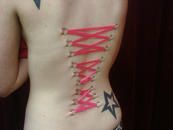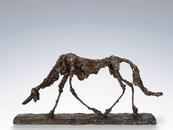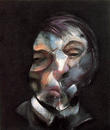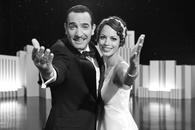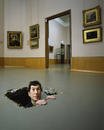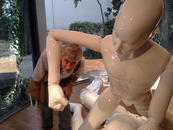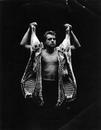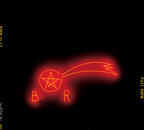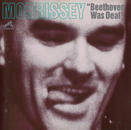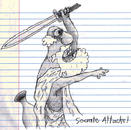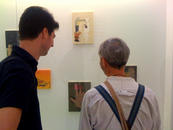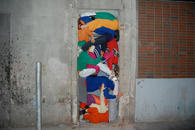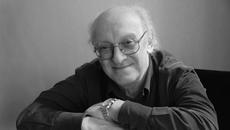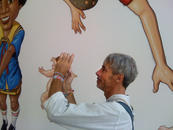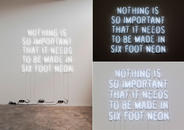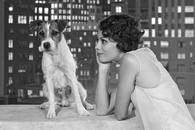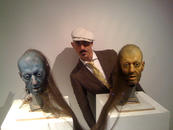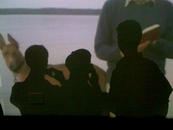In the portfolio section of the Helvetika website, there are presenations of the various projects carried out this summer: ‘Open your eyes’ for Cipollini, ‘In the air’ for Belvest, ‘The click to success’ for EURid, the new 2013 image for DMT, the new Suavia website and work on Cipollini Design.
From uncertainty (and imperfection)
I begin by referring to the previous newsletter or “snapshot.” What follows is another, more subtle, example of the use of the Sunday Edition of “Il Sole 24 Ore” that doesn’t directly affect my job. While preparing for a series of lectures devoted to the controversial subject of aesthetics that will take place next winter at the Master della Cucina Italiana in Vicenza, I found difficulty in defining a core from which to unravel the tangled thread. Aesthetics, in fact, provides endless educational freedom, inhering in (for the most part) the world of senses, of taste and judgment, which are by their very nature personal. This causes an infinite series of minute, unanswerable issues. I finally decided to organize, rather than a series of lectures, a journey of airy charm, the opposite of a systematic pattern to try to transfer the thrill of the aesthetic-creative process, not necessarily related the art world. Art that, in order to eliminate doubt and obstinacy anachronistic, I still like to consider dominated by a certain “aura,” a marginally sacred meaning - well aware of the limitations and contradictions related to the most harmful aspects of globalized mass culture, where too often vacuous passes for sublime.
After having decided the method with which to approach the subject, I was still unsure of exactly where to begin intact doubt the starting point, the nucleus from which to unravel the tangle. The starting point is always important, but in this case it is decisive. It will forever condition the neophyte, determining whether he will become passionate about for the new subject by virtue of his interest in the lesson. Therefore, I searched for the perfect introduction and even a little “clout” to be honest (clout gets attention, and only God knows how much a teacher, even one who mumbles, needs attention). The Greek writer (but actually fairly stateless) Petros Markaris proved to be quite helpful in the matter. In an essay published in the Sunday Edition of Il Sole a few weeks ago, he wrote briefly about contemporary aesthetics. Citing Socrates and the very basis of all Western philosophy, Markaris says that truth is found in uncertainty, because only uncertainty prompts us to seek the truth of the facts. To me, it seems to me unquestionable, almost trivial: only uncertainty has the power to keep us awake. And the search for truth already falls in the realm of truth (of what we were granted to experience on this earth, at least). Certainty, on the other hand, will almost always act as a sedative to the mind, confirming illusions, which lead to only superficial truths.
(In passing and quickly: these assumptions may lead you to believe that the truth really is liquid and changeable, not steady and unchanging as you normally might imagine, with the risk of a drift relativist, especially for untrained minds. I think it is the risk to run, because these are the ideal conditions for a relentless pursuit, "destined to be repeat each time under different circumstances," as well as being the best antidote to totalitarianism of all shapes and kinds.)
But here Markaris takes crucial step, making it a truly aesthetic issue: "If uncertainty opens the way to truth, incompleteness is the mechanism that activates the imagination." Incompleteness calls into question the subject of imperfection, in addition to all that is not finished. If we think about it, these things are prerequisites for all the avant-garde art of the twentieth-century, as well as some brilliant precursors that paved the way for modernity, such as Beethoven, also cited by Markaris, who once said that if he had followed the rules harmony (in his time something closely related to truth and certainty,) he would not have even composed a piano piece. The unfinished, the uncertain, the imperfect, or the fragmentary in a lot of modern and contemporary art are not, as they are often interpreted, shortcomings, but rather conscious aesthetic choices that reflect the world in which we live and which set in motion a very close relationship between the producer and user of the work of art. First of all, they keep the imagination of the craftsman in motion, always open to external stimuli and never closed within himself and his arrogance; they also enliven the imagination of the viewer, which is stimulated to rethink and ideally complete the incomplete, uncertain, fragmented and imperfect elements of the work of the artist.
In this encounter between author and audience there is a complementarity, unknown to ancient art. In this complementarity, as mentioned, you find the core of so much contemporary art that is not understood precisely because it seems not to provide more “answers” but to seek only “questions,” often not so funny (and here I will have you recall my previous snapshot). In a sense, the questions that the work asks are seen as gaps (not the answers we were looking for!) But these gaps can become powerful stimuli for the audience that wants to fill them using the means of interpretation at his disposal. So he will create something new. This chain reaches, even tentatively, a sort of “personal truth” of the viewer right through the uncertainty, incompleteness or fragmentation of representation.
So this is how I got the idea to begin an aesthetics course by focusing on the concept of uncertainty, in order to stimulate “active” participation of the students on a topic that is perhaps unconsciously already familiar with regards to the sensations of taste and personal judgment ... it will prove apt (and I would say this because the idea is not mine but of Markaris).
On the same day of the reading Markaris’s article, I saw the movie 'The Artist' (incidentally a sublimely intelligent film that could only come from France). It was one of those magical coincidences that at first always manage to stun me. Well, in a flash the words of Markaris came to life, visually and audibly. As the director, Hazanavicius, explains in the interview that accompanies the DVD: "I wanted the audience to share the experience of watching a strongly sensual film without words, allowing people to become deeply involved in the story because they fill it with their emotions. The absence of sound pushes people to put more of themselves in the movie. The sound is very important in a film, where there is no sound it is the audience that creates it and invents dialogue and is forced to make use of their imagination."
I never would have imagined that a movie so defective, incomplete, out of date on paper would move me so deeply. The defects, incompleteness, and anachronism are filled with passion, the passion so evidently innervated the subject, the screenplay, the acting (a masterpiece and almost always a complex organism that derives nourishment from the passion of the authors, or the writer). It is the passion that innervated (I repeat the word not by chance,) the film that makes us not consider determinate the fault, failure, and indeed precisely thanks to these, we are urged to complete it by ourselves (and our passion) adding our life to the film - far from being anachronistic, then. In the end this is a metaphor for love, which can arise only sincere in us only if we can ourselves as creatures worthy of compassion, with flaws, fears and uncertainties. A human being full of himself, so that is hard to assess their flaws, will always be unable to love another, just as it is impossible to love a woman we consider to be perfect, and so on ...
Before I start down a dangerous path, I will conclude with Markaris, a man of letters, who gives us a real coup de theater (and I quote word for word, because it deserves it):
"Precisely this Socratic uncertainty that leads to the truth is described by Shakespeare with other words in the play Measure for Measure: “To sue to live, I find I seek to die; / And seeking death I find life. The completeness of death prompts us to seek the incompleteness of life, and the certainty of death, the uncertainty of its truth."
Okay, this whole game of balance between certainty and uncertainty, completeness and incompleteness, life and death, remains suspended on the edge of the contradictory, but the undeniable charm of this game of intelligence that fills the head of beauty that is sterile, incomplete, rewarding and pure.
28/09/2012 Filippo Maglione


